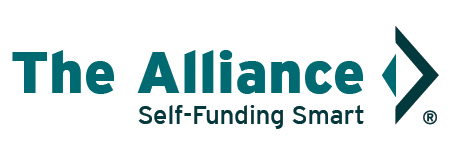How Employers Can Encourage Healthcare Consumerism
By Jennifer Austin, Director of Marketing, The Alliance
 Patients in healthcare are often confused by the healthcare system, unsure where to go or who to trust. In fact, 3 in 4 American patients leave the doctor’s office confused, and do more research, according to a survey of 1,000 U.S. adults. So, if they’re willing to do more research after leaving the doctor, how do we encourage them to do more research beforehand?
Patients in healthcare are often confused by the healthcare system, unsure where to go or who to trust. In fact, 3 in 4 American patients leave the doctor’s office confused, and do more research, according to a survey of 1,000 U.S. adults. So, if they’re willing to do more research after leaving the doctor, how do we encourage them to do more research beforehand?
What is Health Consumerism?
At The Alliance, we like to think of Healthcare consumerism as getting patients to act like consumers of their healthcare, making choices based not on just word of mouth but on information related to cost, quality, and reviews. In an era where consumers can search for all the information they need to buy a new appliance, including reading product reviews, watching videos, and searching for deals, how can employers get their employees to do the same when it comes to healthcare? Give them the same type of tools consumers are used to using. And help them use them.
Digital First
The future of healthcare consumerism needs to start with digital solutions to help support patients in their journey. A good provider directory, like our Find a Doctor tool, is key in ensuring patients know which doctors and hospitals are in-network and which aren’t. That can help patients avoid surprise bills, which happen to more than half of U.S. Consumers, and help keep plan costs down.
In addition to provider directories, information on cost and quality, where it is available, can be helpful. While the recent CMS Price Transparency Rule states that hospitals operating in the United States must provide clear, accessible pricing information online, hospital compliance is less than stellar, at around 14%. And this assumes patients will go to individual hospital websites to compare prices, which can be a lot of work. That’s why The Alliance developed Smarter Care AdvisorSM to help employers, employees, and families. While it is just a starting point, this new tool is designed to help patients make smarter health care decisions that save them – and their employer – money. They can sort surgeries and other procedures by network, cost-range estimate (based on The Alliance’s claims data), and location.
Employers may be worried they’ll hear employees say that low-cost providers and hospitals must mean that lower quality, though. According to RAND corporation’s Hospital Price Transparency study, that isn’t true. Sixty percent of medium-priced hospitals received four or five stars, so employees have options for high-value facilities that offer high quality at lower prices.
Incentives Next
Often, patients rely on their doctors, or friends and family, to provide recommendations on where to go. While anecdotal information is nice, incenting employees to go where care is good and costs are low is critical. This is called steerage, and below are a few examples of how this can be done while still allowing employees and their families the flexibility to go where they want.
- Employers can pay employees to go to a particular provider for shoppable procedures. For example, using a low-cost imaging center for a CT rather than a hospital often saves so much money they can pass those savings along to employees in their paycheck.
- Employers can provide employees with no-cost care, like an independent primary care facility.
- Employers can design their benefits to tier different providers, steering employees to the best cost options.
Finally - Communication, Communication, Communication
Finally, to encourage healthcare consumerism in their employees, employers must communicate multiple times and in multiple ways. Employees aren’t good shoppers until they need the services, so making sure they know where and how to find the information when it’s needed is key. Employers should consider:
- Regular newsletters to employees with vital information about their benefits
- A subject matter expert within the organization so that employees can ask questions confidentially
- An intranet or other employee resource hub with employee educational matters, with links to important sites, etc.
- A care navigation partner or direct primary care clinic (if budget allows) to communicate with patients when it’s most relevant, directing employees to high-value care
Work with your Partners
While all this may seem overwhelming, remember to work with your health benefits partners in executing the above strategies. You don’t have to do it alone. If you’re a client of The Alliance, you have access to your data to assist you in making decisions, and we have a variety of educational employee materials for our clients. Please reach out to your Account Executive and they’d be happy to get you the information you need.



 This post is locked to comments.
This post is locked to comments.
